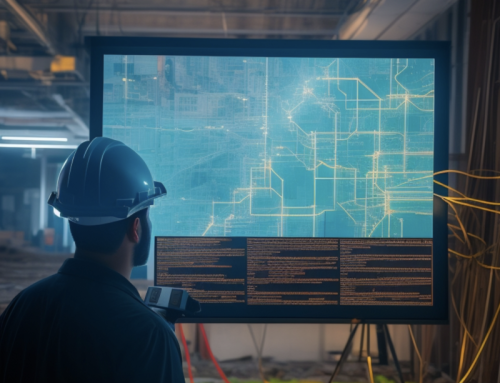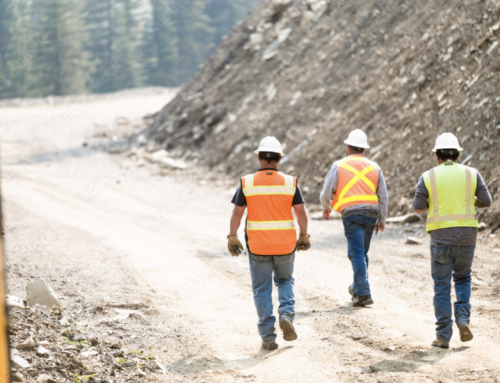Making Safety Planning Conversations Work: A Safety Consultant’s View
September 25, 2018/by Barry Nelson
One of the more difficult tasks within the construction industry is inspiring action in those who don’t answer directly to you. This is something Safety Consultants who work for general contractors, like Jay Biggs, have to deal with on a regular basis.
Jay’s goal is to reduce accident and injury rates at the worksites he consults for, and he recently found new success through re-approaching the Pre-Task Planning (PTP) and Job Hazard Analysis (JHA) processes. Namely, by shifting attention from daily form-filling rituals and focusing on getting the people closest to the work better informed, communicating stronger, and staying engaged.
We had the opportunity to speak with Jay about his accomplishments, and how he attributes parts of his success to SmartTagIt, a mobile-application that improves PTPs and JHAs with catered tools for reducing the risk of worksite accident and injuries.
In short: By using SmartTagIt to capture and review photo and video of daily planning processes, safety managers can coach their crews and leaders to have more effective discussions and better address problem areas on projects. Improving these safety planning practices elevates in-house expectations about safe work practices, ultimately leading to a strengthened safety culture.
A Safety Contractor’s Perspective on Improving Daily Planning Conversations
Jay Biggs, Safety Consultant for the Core Safety Group shares his experience with SmartTagIt and tells us how it has improved his project safety planning practices.
Here’s what he had to say:
What was the safety planning process like before?
Jay: “A lot of the time at least half of the JHAs I review were either incomplete, or filled out incorrectly.”
Before SmartTagIt, Jay explains he was required to physically collect and review a pre-task plan for every subcontractor on site. This meant additional time was spent making the necessary adjustments, and then reviewing these changes with the appropriate supervisors. From there, Jay was then required to extract pertinent data from the pre-task plans and compile a daily report for senior management.
What made you feel the need to change/do something different?
Jay: “I was not able to spend as much time as I needed out in the field because I was really tied up reviewing JHAs.”
On most projects during peak of construction, Jay may be managing close to 50 subcontractors. On these large projects, the pre-task planning process was an enormously time consuming operation. And time spent shuffling paperwork meant less time walking the site.
Jay: “During my site safety walks, I would ask crew members what was discussed during safety conversations. Their responses were often along the lines of either ‘I don’t know, I wasn’t there’ or ‘my boss filled it out and I just signed it.’”
Jay expressed that there was virtually no interaction between supervisors and their crews. Pre-task plans were completed in isolation by the supervisors without discussion or follow up with the crew.
Describe the safety planning process using SmartTagIt
Jay: “I can quickly look at the report and check that everything’s covered.”
SmartTagIt means Jay has the majority of his subcontractors’ pre-task plans in the palm of his hand immediately after they have been completed. Instead of going through paperwork, Jay can electronically access and review a daily safety report from all the subcontractors, and he can start walking the job site right away.
How has SmartTagIt changed your interactions with the subcontractors?
Jay: “With SmartTagIt I have better interactions with subs, and I have more time to engage with each of our crews.”
Using photo and video recordings of safety conversations, Jay utilizes this content to have more effective discussions with the crews. And with more time for safety walks, he can have a stronger presence in the field.
How has SmartTagIt helped you be more successful in your role as a safety leader?
Jay: “In comparing videos recorded over six months ago to those recorded today, it’s clear the crews are more interested and that they are getting more involved.”
Jay went on to express that by doing a better job at daily safety planning, it shows his subcontractors that the project is committed to a safer workplace. Everyone on the work site is expected to participate in the safety planning process, and with daily video recordings it’s easy to identify those workers who are not engaged in safety conversations. With SmartTagIt, Jay can review safety talks and quickly address problem areas on the project.
Were there challenges with implementation? Would you do anything differently?
Jay: “On some projects, I’ve experienced resistance from project leaders. Their reluctance to change is the biggest challenge. The subcontractors love SmartTagIt, but support needs to come from the leadership of the general contractor.”
Other challenges Jay mentioned surround SmartTagIt’s device compatibility. While the majority of subcontractors use Apple devices that are compatible with SmartTagIt, a few use Android. So some supervisors are still required to complete a paper pre-task plan. But with most crews using SmartTagIt, this technology has significantly reduced the paper burden of traditional pre-task plans and improved communication.
Thinking about your journey with SmartTagIt, what is the most valuable lesson you have learned relative to improving daily safety planning?
Jay: “I talk to supervisors about how SmartTagIt allows them to get more involved with their crews, and get crews more engaged. But by getting new users familiar with the application ahead of time, they are more motivated and receptive to adopting SmartTagIt as a daily safety planning tool.”
Jay continued to explain he that believes successful implementation begins with good training. He provides all his subcontractors with a written orientation to SmartTagIt prior to conducting in-house training.
Jay: “It’s important to start with educating new users about the benefits first, then talk about the technology.”
Are you working safer? If so, how?
Jay: “I’m always going to use it. There’s no going back. We’re having better interactions, and crews are actually having conversations about safety.”





